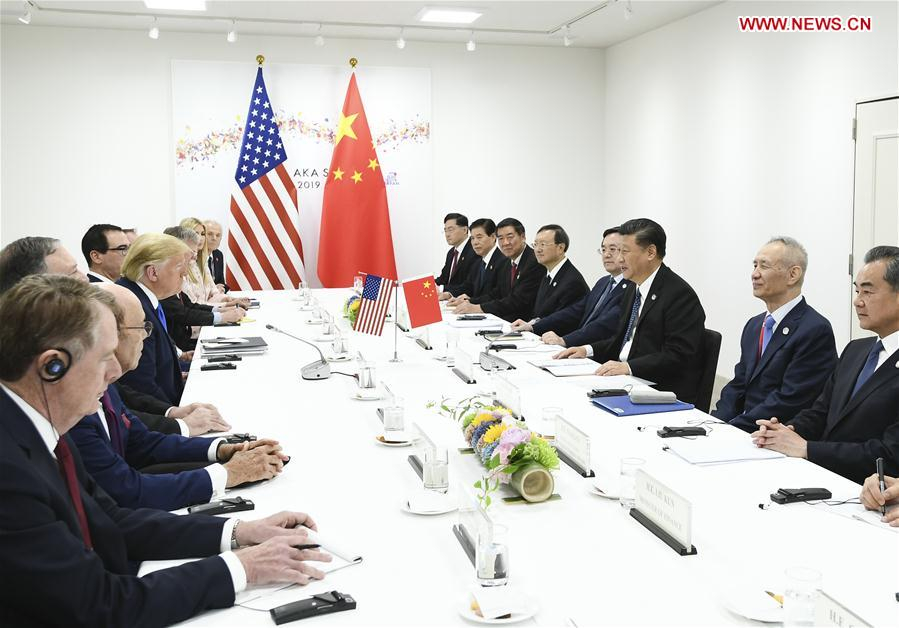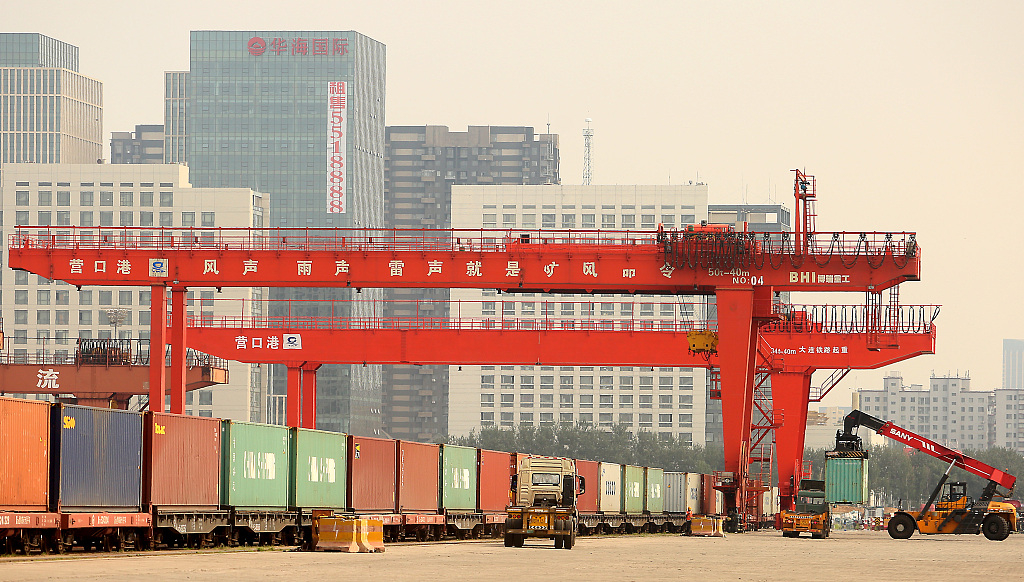

Editor's Note: Tom Fowdy is a British political and international relations analyst and a graduate of Durham and Oxford universities. He writes on topics pertaining to China, the DPRK, Britain, and the United States. The article reflects the author's opinion, and not necessarily the views of CGTN.
The much-anticipated G20 meeting in Osaka between Chinese President Xi Jinping and his U.S. counterpart Donald Trump has yielded positive results. Following a breakdown in May which saw trade tensions escalate, the two parties have agreed to restart trade consultations and Trump has dropped a threat to impose further tariffs on imports from China, declaring that things are "back on track" for what he hopes can materialize into a "historic" and "fair" trade deal.
International markets and supply chains will likely be relieved at the outcome, having been rattled amid the uncertainty of growing trade tensions.
Why did a breakthrough occur now? The past few months saw much discussion about a long and unrelenting struggle between both sides. However, observers may note that today the pragmatic realities of interdependence won.
All the warnings to the U.S. economy were on visible display if escalation continued. On such a note, whilst Trump is far too easily empowered in what he is doing by the influence of Washington hawks, one cannot downplay that he has been consistent in his goal of eventually securing a grand deal with Beijing and "claiming victory" accordingly.
With 2020 edging ever closer, he needs tangible results to display to the American electorate. In his typical style, he has decided the timing is now right and strives to "seize" the moment.
In mid-May, we heard it all that a trade deal between China and the U.S. was close, even from the mouth of senior officials themselves. Then suddenly, Trump in his typical unpredictable fashion came from nowhere and accused China of "backtracking" on a proposed deal, threatening more tariffs.

Chinese President Xi Jinping meets U.S. President Donald Trump in Osaka, Japan, June 29, 2019. /Xinhua Photo
That same week, a U.S. blacklisting of Huawei on the commerce "entity list" followed. Hawks cheered, whilst observers spoke of a new "cold war" between the two powers in the sphere of technology as seemingly both sides entrenched their positions.
Suddenly, things all looks very rosy again. Whilst Trump upped the ante, what he did not do in any sense was take the prospect of a deal off the table permanently. In fact, the possibility was never off the table.
The president's bark is always louder than his bite, and whilst he tries sometimes to even intimidate those he negotiates with, he often displays a quiet yet notable consideration of the catastrophic consequences of those threats. He didn't really want to bomb the DPRK, and hit back at his own administration's aspirations to do so to Iran as well.
Given this, the trade war always had its limits, despite what other hawks hoped. As Trump unleashed tariffs, a quiet yet serious display of discontent from a series of leading American businesses saw stark letters sent to both the president and Mike Pence. They warned of rising costs, job losses and disruptive supply chains.
Trump is proud of how America's economy is right now, and he wants to claim as much credit for it as possible. He does not want to be pinpointed as the man who eventually unraveled it, even if he currently is receiving no major scrutiny over the trade war from other politicians.
Instead, he wants to be the man who can reach a deal with China that he describes as "historic" and in turn, claim victory on the grounds he was the one who solved America's trade problems with Beijing, bringing jobs, industries and money back home.

A crane unloads containers at a port in Yingkou, a major port city in China's Liaoning Province, July 18, 2018. /VCG Photo
With 2020 in view, does he want his trade war to be depicted as a failure? Or to dig himself into a hole that he cannot get out of? Certainly not!
Whilst he wants to give the impression he is being "tough" on China, which also may reveal some of the reasoning behind his May U-turn, he is also aware of the reality that Beijing will not accept total capitulation. Thus now is the time to restart things with the view of forming a grand narrative that "he won."
China has certainly indicated it will be happy to pursue such a deal with Trump. Whilst China has made it clear that it will not accept outright coercion or capitulation, it will certainly accept negotiation and compromise.
It is not and never has been in Beijing's interest to pursue an escalating and destructive economic conflict with Washington. From the very beginning, it has stressed a fair resolution to this saga which should ultimately be resolved through dialogue.
Therefore, as a whole, the outcome of the G20 meeting between the two leaders is very good news. No new tariffs, a reset of talks and an open willingness to seek out a deal undoubtedly send out a message of optimism to observers.
Whilst there is still some pathway to go before a deal is finalized, there are strong indications that Trump has now decided what he wants and where he wants to be.
(Cover Photo: Chinese President Xi Jinping meets U.S. President Donald Trump in Osaka, Japan, June 29, 2019. /Xinhua Photo)
(If you want to contribute and have specific expertise, please contact us at opinions@cgtn.com.)

Copyright © 2018 CGTN. Beijing ICP prepared NO.16065310-3
Copyright © 2018 CGTN. Beijing ICP prepared NO.16065310-3